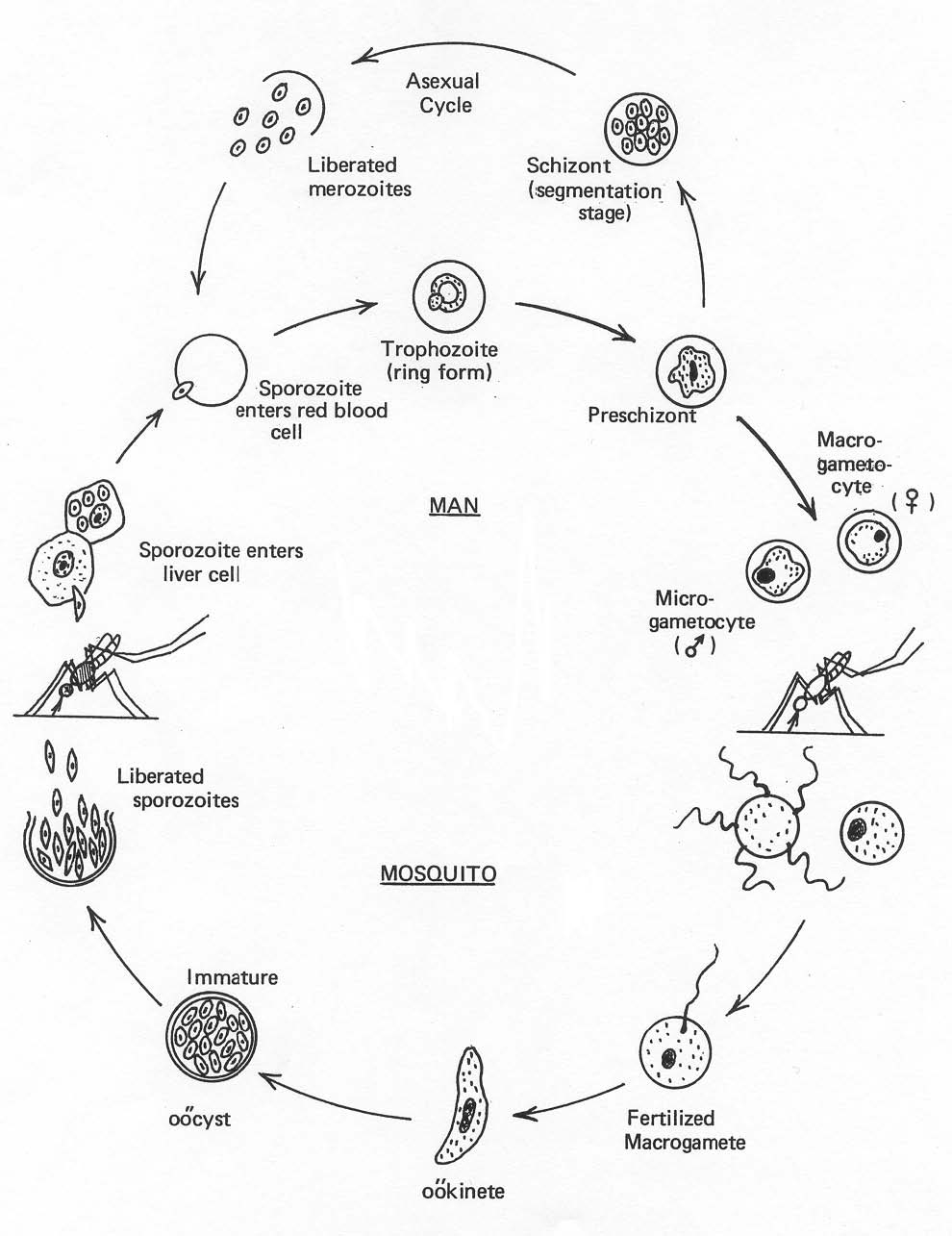Principles of Epidemiology and Microbiology
Lesson 2: Public Health Microbiology
Section V: Protozoa
2-23
2-23. PATHOGENIC PROTOZOA
Table 2-7 lists the principal protozoan diseases according to the classification of the infectious agent. Figure 1-14 shows the life cycle of the malarial parasite.
|
INFECTIOUS AGENT
AMEBAE
Entamoeba histolytica
CILIATES
Balantidium coli
FLAGELLATES
Giardia lamblia Trichomonas vaginalis
Trypanosoma brucei Trypanosoma Modesiemse gambiense
Trypanosoma. cruzi
Leishmania donovani
Leishmania tropica Leishmania braziliensis
SPOROZOA
Plasmodium vivax Plasmodium malariae Plasmodium Łalciparum Plasmodium ovale |
DISEASE OR CONDITION
Amebic dysentery (amebiasis)
Bloody dysentery similar to amebiasis
Diarrhea, malabsorptionInflammatory changes in the vagina(vaginitis)
African sleeping sickness.
Chagas' disease (American trypanosomiasis), a systemic infection resulting in spleen and liver enlargement and myocardial damage.
Kala-azar (tropical splenomegaly), a disease characterized by fever, disturbances in the blood-forming organs, and enlargement of spleen and liver.
Cutaneous leishmaniasis (tropical sore) American leishmaniasis (mucocutaneous' leishmaniasis or espundia), ulcerative necrosis of nose, mouth, and pharynx.
Vivax (benign tertian) malaria. Quartan malaria. Falciparum (aestivo-autumnal or malignant tertian) malaria. Ovale malaria (rare) . |
Table 2-7. Principal protozoan diseases of man.


